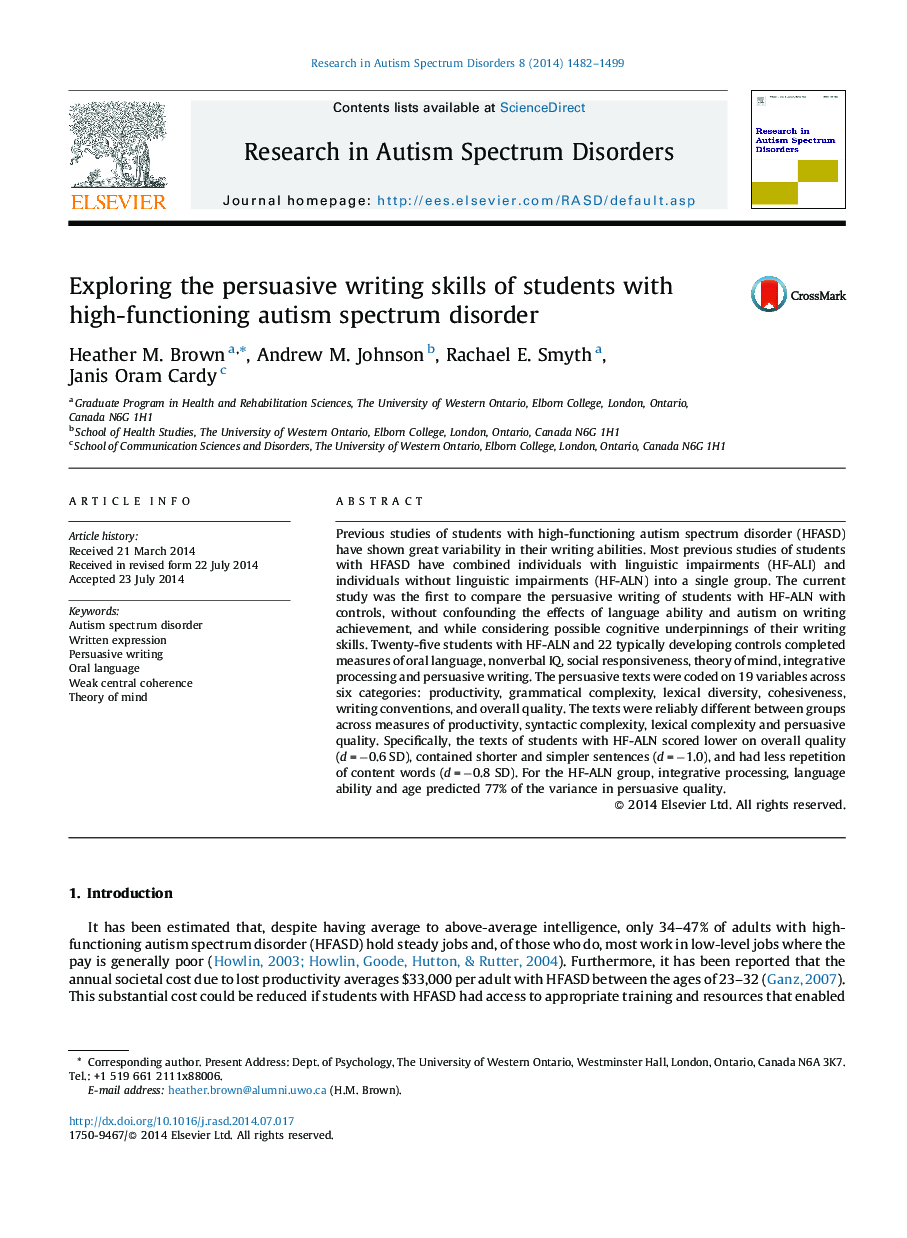| Article ID | Journal | Published Year | Pages | File Type |
|---|---|---|---|---|
| 10317094 | Research in Autism Spectrum Disorders | 2014 | 18 Pages |
Abstract
Previous studies of students with high-functioning autism spectrum disorder (HFASD) have shown great variability in their writing abilities. Most previous studies of students with HFASD have combined individuals with linguistic impairments (HF-ALI) and individuals without linguistic impairments (HF-ALN) into a single group. The current study was the first to compare the persuasive writing of students with HF-ALN with controls, without confounding the effects of language ability and autism on writing achievement, and while considering possible cognitive underpinnings of their writing skills. Twenty-five students with HF-ALN and 22 typically developing controls completed measures of oral language, nonverbal IQ, social responsiveness, theory of mind, integrative processing and persuasive writing. The persuasive texts were coded on 19 variables across six categories: productivity, grammatical complexity, lexical diversity, cohesiveness, writing conventions, and overall quality. The texts were reliably different between groups across measures of productivity, syntactic complexity, lexical complexity and persuasive quality. Specifically, the texts of students with HF-ALN scored lower on overall quality (d = â0.6 SD), contained shorter and simpler sentences (d = â1.0), and had less repetition of content words (d = â0.8 SD). For the HF-ALN group, integrative processing, language ability and age predicted 77% of the variance in persuasive quality.
Keywords
Related Topics
Life Sciences
Neuroscience
Behavioral Neuroscience
Authors
Heather M. Brown, Andrew M. Johnson, Rachael E. Smyth, Janis Oram Cardy,
